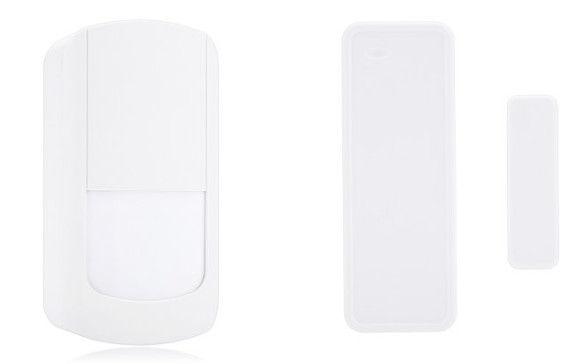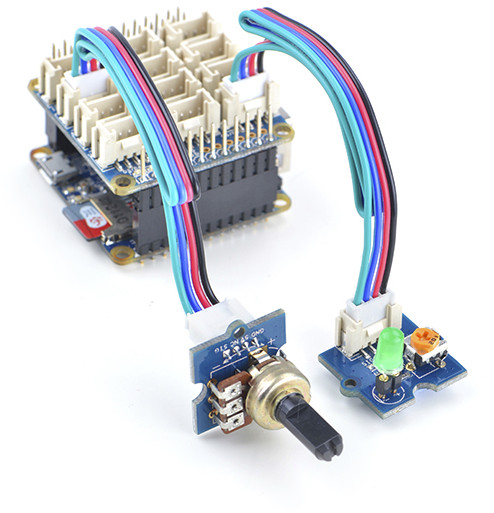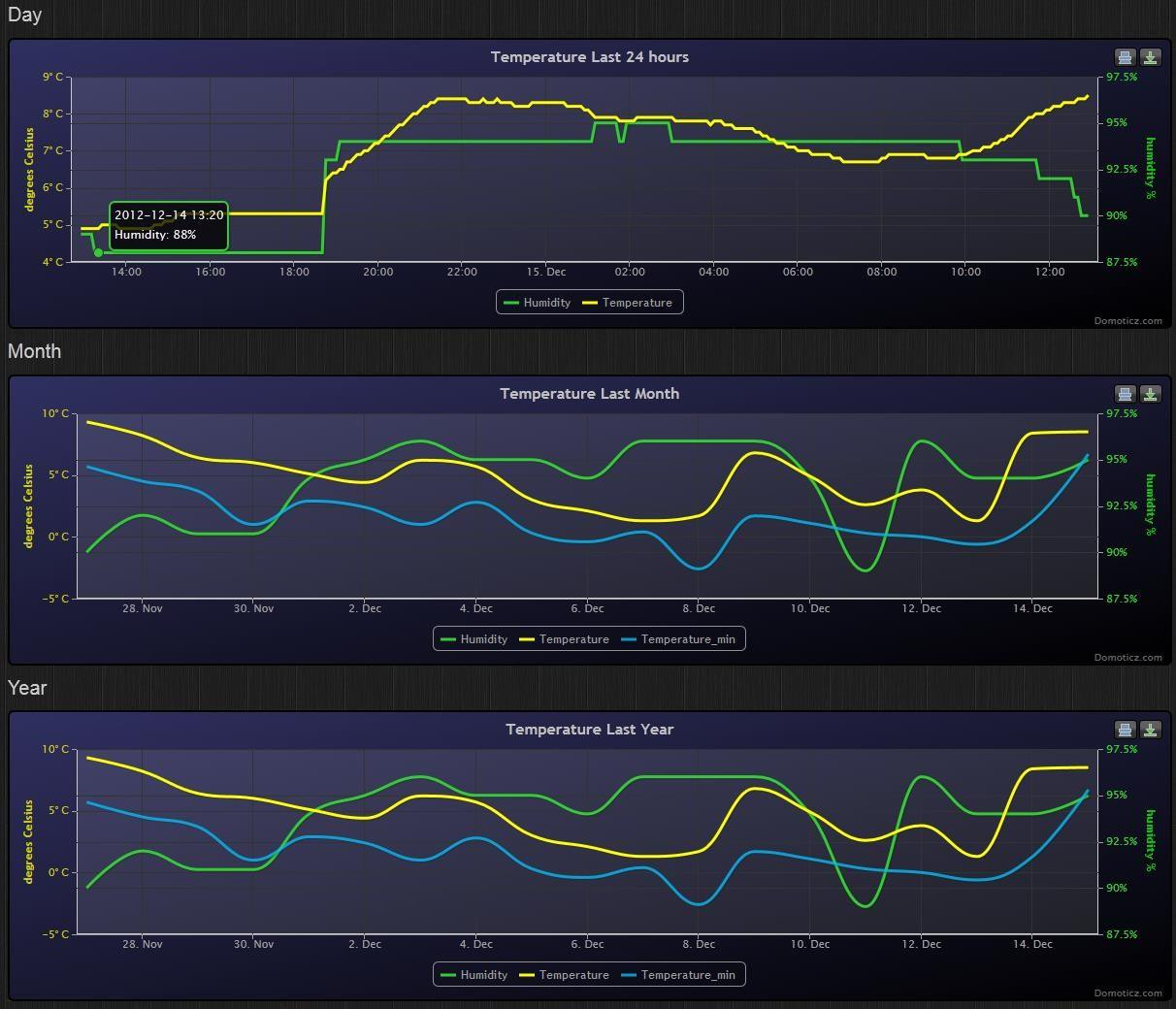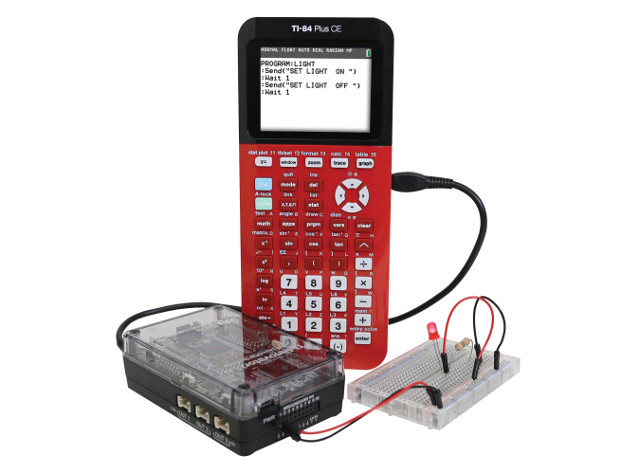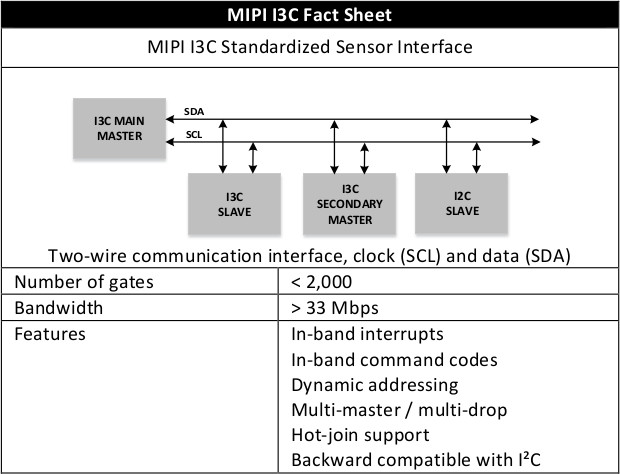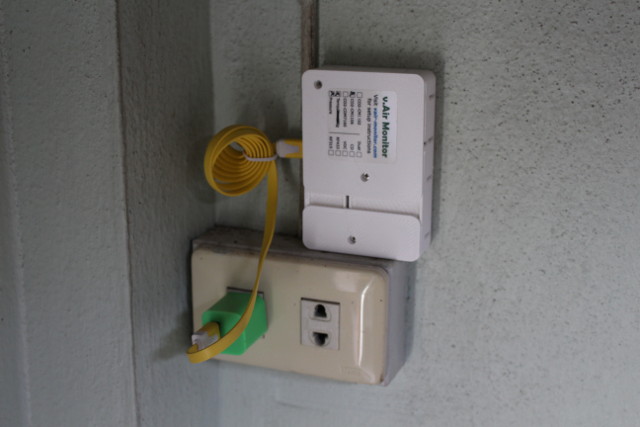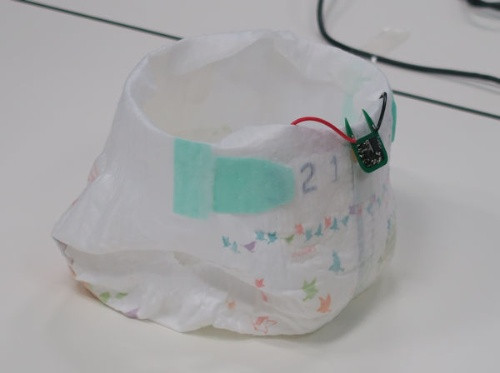Karl here again for part 2 of my home automation project. We will be looking at how to automate your lights based on time of day and motion. In the first part we setup Home Assistant and uploaded firmware to basic Sonoff Wifi switches. Today we will setup a 433 MHz to MQTT bridge and some sensors. 433 MHz Depending on your country 433 MHz is an open frequency to use to communicate with. There are hundreds of different types of devices that use 433 MHz to communicate information. We will be focusing on 2 today from Gearbest: WMS07 motion sensor (left) and WDS07 door/window sensor (2 parts, right). I am not taking the door/window sensor apart, since it is super basic, but I’ve included some photos of the PIR motion detector. 433 MHz Bridge While contemplating how to get presence on a per room basis I ran across this […]
$30 BakeBit Starter Kit Adds Sensors & Buttons to Your NanoPi NEO & NEO Air Boards
FriendlyElec (previously FriendlyARM) launched NanoPi NEO and then NanoPi NEO Air board as respectively Ethernet and WiFi/Bluetooth connected boards for IoT applications. But so far, there was no ecosystem around the board, you had to use your own sensor modules, and write your own software to control them. This has now changed with the launch a BakeBit Starter Kit with twelve sensor modules, a NanoHat Hub add-on board designed for NanoPi boards, as well as BakeBit Library to control the hardware. The NanoHat Hub plugs into the two NanoPi NEO headers and provide 12 headers with 3x I2C interfaces, 3x analog interfaces, 2x UART interfaces, and 4x digital interfaces among which D3 and D5 support PWM, compatible with SeeedStudio Grove modules. You then have a choice of 12 modules to connect to the NanoHat Hub: OLED Module Ultrasonic Module Green LED Module Red LED Module LED Bar Module Rotary Angle […]
How to Install Domoticz Home Automation System in NanoPi NEO and Other ARM Linux Boards
I’ve recently started experimenting with IoT projects, and the first hurdle is to select the hardware and software for your projects are there are simply so many options. For the hardware your first have to choose the communication protocols for your sensors and actuators, and if you are going to go with WiFi, ESP8266 is the obvious solution, used together with your favorite low cost Linux development board such as Raspberry Pi or Orange Pi to run some IoT server software locally or leveraging the cloud. But the most difficult & confusing part for me was to select the server software / cloud services as there are just so many options. I prefer having a local server than something running only in the cloud, as my Internet goes a few hours a month, so I started with a solution combining ThingSpeak with MQTT gathering data from Sonoff power switches running […]
TI Innovator Hub Connects MSP432 LaunchPad Board to TI Graphing Calculators
I remember when I was in high school we all had those TI calculators to cheat enhance our chances of passing exams, but Texas Instruments has now launched what it calls TI-Innovator Hub based on a MSP432 LaunchPad board that connects to some of their graphing calculators and allows student to program and control external hardware through their calculators. Innovator Hub hardware specifications: MSP-EXP432P401-ET TI LaunchPad Board 3x input ports, 3x output ports, I²C port Breadboard connector with 20 labeled pins USB Mini USB Port (DATA port for connection to a TI graphing calculator, or a computer running TI-Nspire CX software) Micro-USB port (POWER port to connect to external power source) Misc – Red LED, RGB LED, Light Brightness Sensor, and speaker Enclosure The hub can then be programmed using TI-84 Plus CE (TI Basic language) or TI-Nspire CX (Lua language) graphing calculators. It’s a bit like playing with Arduino […]
MIPI I3C Sensor Interface is a Faster, Better, Backward Compatible Update to I2C Protocol
I2C (Inter-Integrated Circuit) is one of the most commonly used serial bus for interfacing sensors and other chips, and use two signals (Clock and Data) to control up to 128 chips thanks to its 7-bi address scheme [Update: That’s the theory, as in practice it’s limited to a dozen devices max. due to capacitive load, see comments]. After announcing it was working of a new I3C standard in 2014, the MIPI Alliance has now formally introduced the MIPI I3C (Improved Inter Integrated Circuit) Standardized Sensor Interface, a backward compatible update to I2C with lower power consumption, and higher bitrate allowing it to be used for applications typically relying on SPI too. I3C offers four data transfer modes that, on maximum base clock of 12.5MHz, provide a raw bitrate of 12.5 Mbps in the baseline SDR default mode, and 25, 27.5 and 39.5 Mbps, respectively in the HDR modes. After excluding […]
Changhong H2 Smartphone Comes with a Molecular Sensor to Detect Materials
New smartphones used to bring lots of new useful features and innovations a few years ago, but as new device releases has become much less interesting in recent years with the most interesting recent features probably being dual rear camera systems, and fast charging.However, Changhong H2 Android smartphone is integrating a unique feature thanks to SCiO molecular sensor allowing the device to detect materials. The rest of the specifications are pretty standard with an octa-core processor clocked at 2 GHz, a 6″ full HD display, a 16 MP rear camera with autofocus, a fingerprint sensor, and a 3,000mAh polymer battery. There’s also a special physical button to extend battery life & clear memory. The smartphone molecular sensor works by emitting lights and analyzing the reflected light spectrum. This enabled the smartphone to scan your food and for example detect the type of fruit you are holding in your hand, as […]
vThings WiFi CO2 Monitor Quick Start Guide
I’ve already checked out vThings CO2 Monitor hardware and we’ve seen it’s based on ESPrino ESP8266 board, and my model includes CM1106 CO2 sensor and BMP180 temperature and pressure sensor. I’ve now installed it in my kitchen, about 3 to 4 meters from the gas stove, and getting data to ThingSpeak. The door and window of my kitchen are open all day, and the wall have ventilation holes. That’s important for CM1106 sensor since it auto calibrates every 3 days in clear air. If you plan to use such sensor in a closed environment, you should buy Vthings with CM1102 CO2 sensor that costs more, but does not require calibration. Since all WiFi systems I’ve just so far starting AP mode for configuration, I first looked for an access point, but… nothing… Then I decided to read the documentation (might be useful at times), and the monitor is actually configured […]
Batteryless, Urine Powered Smart Diapers Notify You When It’s Time to Change Them
One of the downside with current smart wearables is that most need to be recharged quite often, every day, week or month, and we’re still a long way of 10 year battery life offered by typical watches. I’m hopefully that eventually many devices won’t need to be recharged at all as we’ll have made improvements both in terms of power efficiency and energy harvesting using solar, body heat, vibrations and other techniques. Takakuni Douseki, professor at the Department of Electronic and Computer Engineering of Ritsumeikan University, has been working on micro energy harvesting, and his latest “wireless involuntary urination sensor system” notifies the user when it’s time change the diapers without the need of any battery, instead using energy generated by urine and stored in a capacitor in order to transmit the data wirelessly. The prototype is using a modified baby diaper with a 320x5mm activated carbon piece, and a […]


